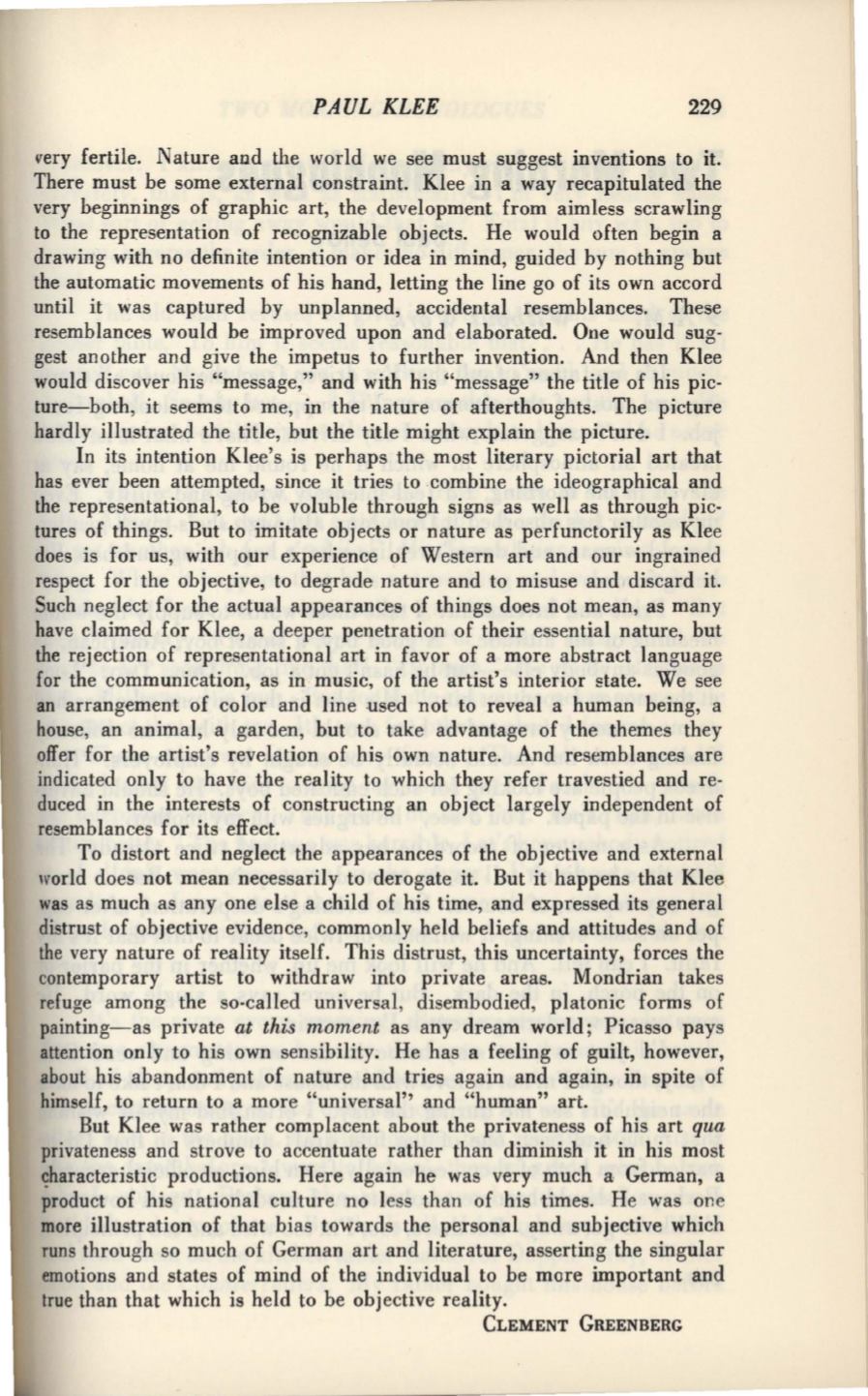
PAUL KLEE
229
very fertile. Nature aod the world we see must suggest inventions to it.
There must be some external constraint. Klee in a way recapitulated the
very beginnings of graphic art, the development from aimless scrawling
to the representation of recognizable objects. He would often begin a
drawing with no definite intention or idea in mind, guided by nothing but
the automatic movements of his hand, letting the line go of its own accord
until it was captured by unplanned, accidental resemblances. These
resemblances would be improved upon and elaborated. One would sug–
gest another and give the impetus to further invention. And then Klee
would discover his "message," and with his "message" the title of his pic–
ture-both, it seems to me, in the nature of afterthoughts. The picture
hardly illustrated the title, but the title might explain the picture.
In its intention Klee's is perhaps the most literary pictorial art that
has ever been attempted, since it tries to .combine the ideographical and
the representational, to be voluble through signs as well as through pic–
tures of things. But to imitate objects or nature as perfunctorily as Klee
does is for us, with our experience of Western art and our ingrained
respect for the objective, to degrade nature and to misuse and discard it.
Such neglect for the actual appearances of things does not mean, as many
have claimed for Klee, a deeper penetration of their essential nature, but
the rejection of representational art in favor of a more abstract language
for the communication, as in music, of the artist's interior state. We see
an arrangement of color and line used not to reveal a human being, a
house, an animal, a garden, but to take advantage of the themes they
offer for the artist's revelation of his own nature. And resemblances are
indicated only to have the reality to which they refer travestied and re–
duced in the interests of constructing an object largely independent of
resemblances for its effect.
To distort and neglect the appearances of the objective and external
world does not mean necessarily to derogate it. But it happens that Klee
was as much as any one else a child of his time, and expressed its general
distrust of objective evidence, commonly held beliefs and attitudes and of
the very nature of reality itself. This distrust, this uncertainty, forces the
contemporary artist to withdraw into private areas. Mondrian takes
refuge among the so-called universal, disembodied, platonic forms of
painting-as private
at this moment
as any dream world; Picasso pays
attention only to his own sensibility. He has a feeling of guilt, however,
about his abandonment of nature and tries again and again, in spite of
himself, to return to a more "universal'' and "human" art.
But Klee was rather complacent about the privateness of his art
qua
privateness and strove to accentuate rather than diminish it in his most
~haracteristic
productions. Here again he was very much a German, a
product of his national culture no less than of his times. He was one
more illustration of that bias towards the personal and subjective which
runs through so much of German art and literature, asserting the singular
emotions and states of mind of the individual to be more important and
true than that which is held to be objective reality.
CLEMENT GREENBERG


